Compressed air is often called the fourth utility, powering everything from pneumatic tools to high-precision manufacturing. But unlike electricity or water, its efficiency depends on real-time monitoring and system optimisation. In fact, generating compressed air can be up to eight times more expensive than purchasing the equivalent energy as electricity, with 80% of the energy input often lost as waste heat. Over time, factors like air leaks, pressure drops, and fluctuating air demand can impact air compressor performance, leading to higher power consumption and unnecessary downtime.
Different industries require specific air quality, airflow rates, and pressure levels. What works for piston or rotary screw air compressors in industrial settings will not meet the stringent dry air standards for food or pharmaceutical production. Compressed air flow meters provide critical insights by measuring pressure, monitoring output flow (often in cubic feet per minute or CFM), and tracking real-time performance, ensuring your system delivers the right amount of air at optimal efficiency. Understanding your system's Free Air Delivery (FAD) versus its power consumption is the first step to true optimisation.
This is where flow monitoring becomes essential. While routine maintenance offers periodic checks, on-site air compressor monitoring systems provide continuous data on airflow, compressor output, and system health. By leveraging tools like thermal mass flow and power meters, businesses can troubleshoot inefficiencies, reduce waste, and maximise system reliability, keeping compressed air cost effective, efficient, and ready for any demand. This data allows you to calculate your system's specific power (kW/100 cfm), the most important KPI for efficiency.
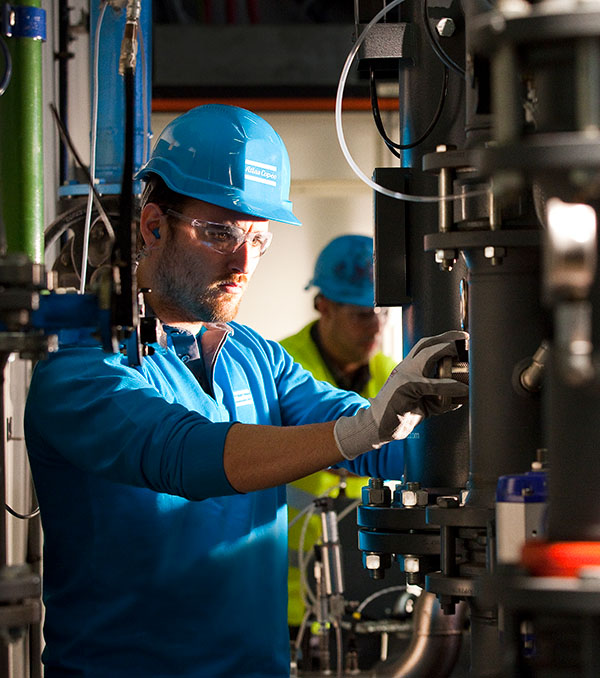
Why monitor air compressor flow?
There are a host of reasons why you might want to monitor air compressor air flow and other data from your entire air system, including the compressor room and point of use.
- Energy efficiency: Compressors consume a significant proportion of the UK’s industrial energy usage. Monitors can be an energy management system that helps you ensure you are not using more than you need to. Leaks alone can account for 20-30% of a compressor's total output, so identifying them is crucial.
- Quality checks: Monitors can help you precisely maintain the parameters of air quality you need, checking against a set of criteria including temperature (in °c) and relative humidity (rh). It will give you the peace of mind that you are getting exactly the quality of air you require.
- Operational optimisation: The data you collect allows you to consider your operating processes and organisation, giving you evidence that you can use for your operations management, ensuring your compressor is running at full load when necessary, but can also run efficiently at part-load.
But underlining all of these is cost-effectiveness. When you have the power to fully understand your compressed air system and how you use it, you also have the power to keep your costs low and your productivity high.
What does a monitoring system include?
Compressed air monitoring systems will be different in every setting. How you use your compressor, and what you want from it, will determine what monitoring set-up is best for you. However, common monitoring equipment includes:
- Flow meters: These will track the pressure and consumption of compressed air at various points in your system.
- Temperature sensors: Which track the temperature of equipment and air to ensure it remains within your required parameters.
- Dew point meters: Will track and measure the dew point of water, often installed after a dryer, which can be essential if bacterial contamination is a concern.
- Discharge air sensors: Monitor the characteristics of air being released from the system.
- Energy consumption meters: Can give a real-time indication of energy use, so you can be sure the compressor is performing as you expect.
Types of Flow Meters
Choosing the right technology is critical for accurate data. The main types of flow meters include:
- Thermal Mass Flow Meters: These are the most common choice for clean, dry air. They work by measuring the heat transfer from a heated sensor to the air flow. They are highly accurate, can measure mass flow directly (e.g., in SCFM), and have a high turndown ratio, making them excellent for detecting both peak production flows and low-flow leaks.
- Vortex Flow Meters: These meters are very robust and are often used for measuring wet or dirty air, such as directly at a compressor's discharge before the air treatment or receiver tank. They work by measuring vortices shed by an obstruction in the flow path.
- Differential Pressure (DP) Meters: These traditional meters, including pitot tubes and orifice plates, measure the pressure drop across a restriction to calculate flow. Pitot tubes are useful for taking measurements in difficult locations or large pipes.
- Ultrasonic Flow Meters: These are non-intrusive, clamp-on meters that measure flow from the outside of a pipe. They are excellent for system audits and temporary measurements as they don't require shutting down the system for installation.
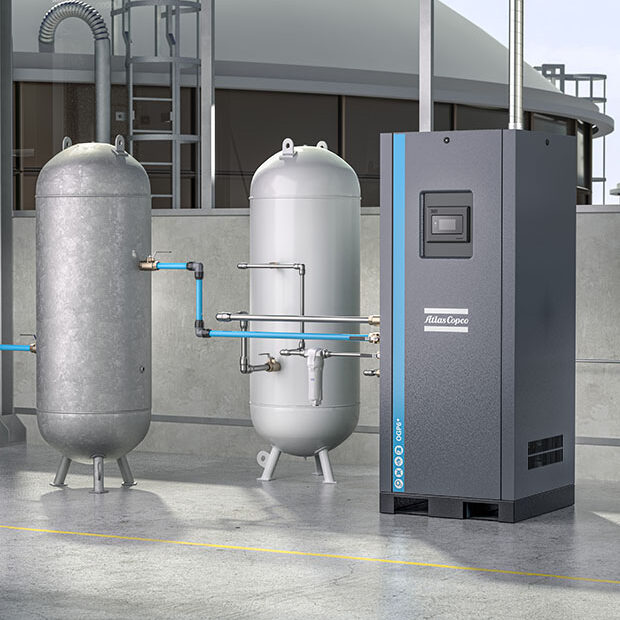
The benefits of monitoring
Flow monitoring helps reduce energy waste, prevent downtime, and improve efficiency. Real-time compressed air consumption monitoring ensures optimal performance and lower costs, whether managing a single compressor or a full system.
Lower Energy Costs
Compressed air is one of the most expensive utilities, with energy making up 70% of operational costs. Monitoring detects air leaks, pressure drops, and inefficient unload cycles, allowing you to adjust airflow rates and operating pressure in real time. This also helps eliminate "artificial demand", a major source of waste where the entire system is over-pressurised (measured in pounds per square inch or PSI) just to satisfy a single tool, causing every leak and unregulated use-point to consume far more air. Tracking kW per CFM ensures your compressor’s output meets demand efficiently.
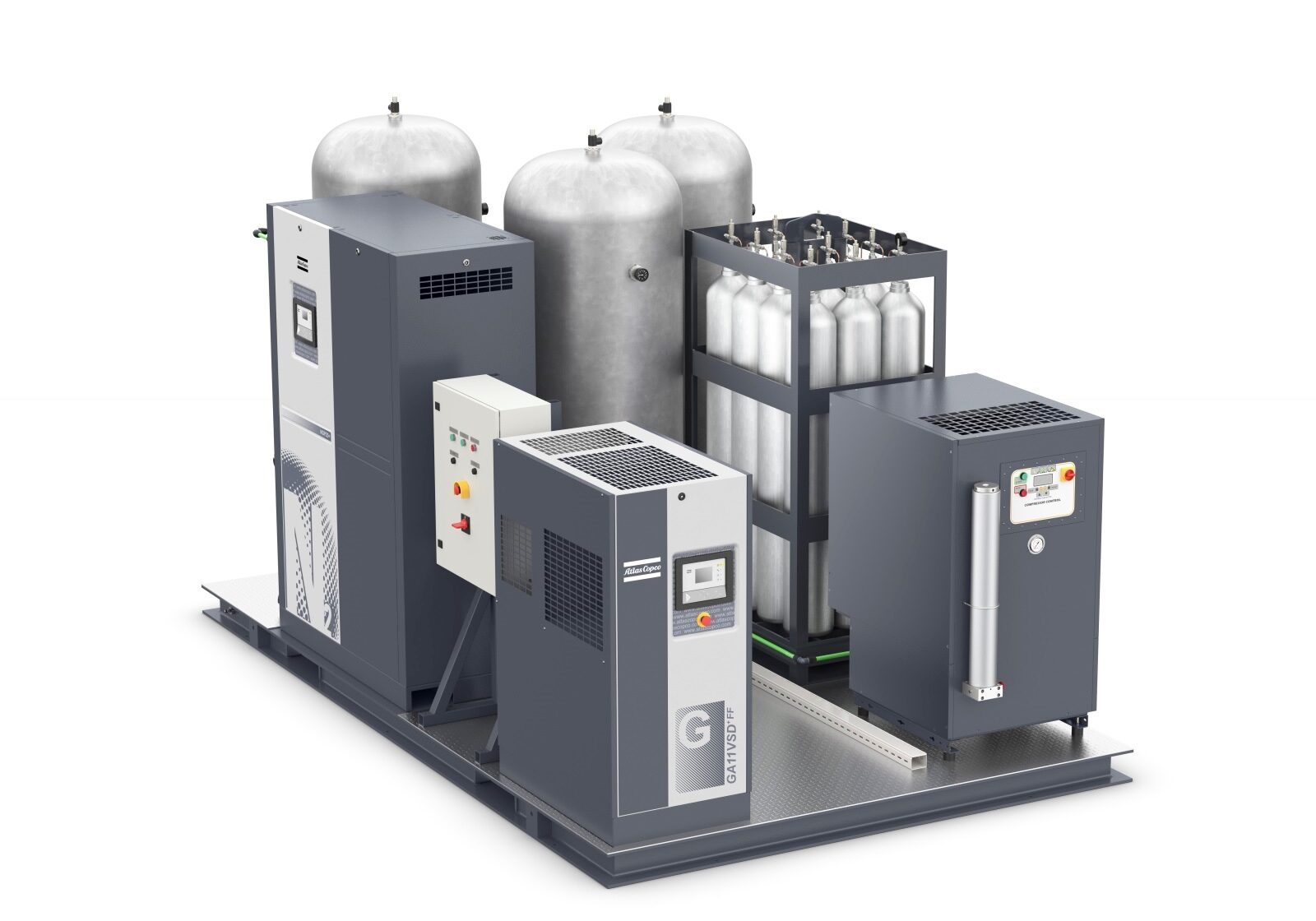
Ensure Air Quality and Prevent Downtime
Industries like food, pharmaceuticals, and electronics require dry, contaminant-free air. Monitoring dew point, water vapour, and PSI fluctuations ensures compliance with air quality standards like ISO 8573-1 while preventing unexpected failures. Early detection of pressure drops or excess power consumption from any type of compressor, be it piston or centrifugal, helps avoid breakdowns and costly repairs.
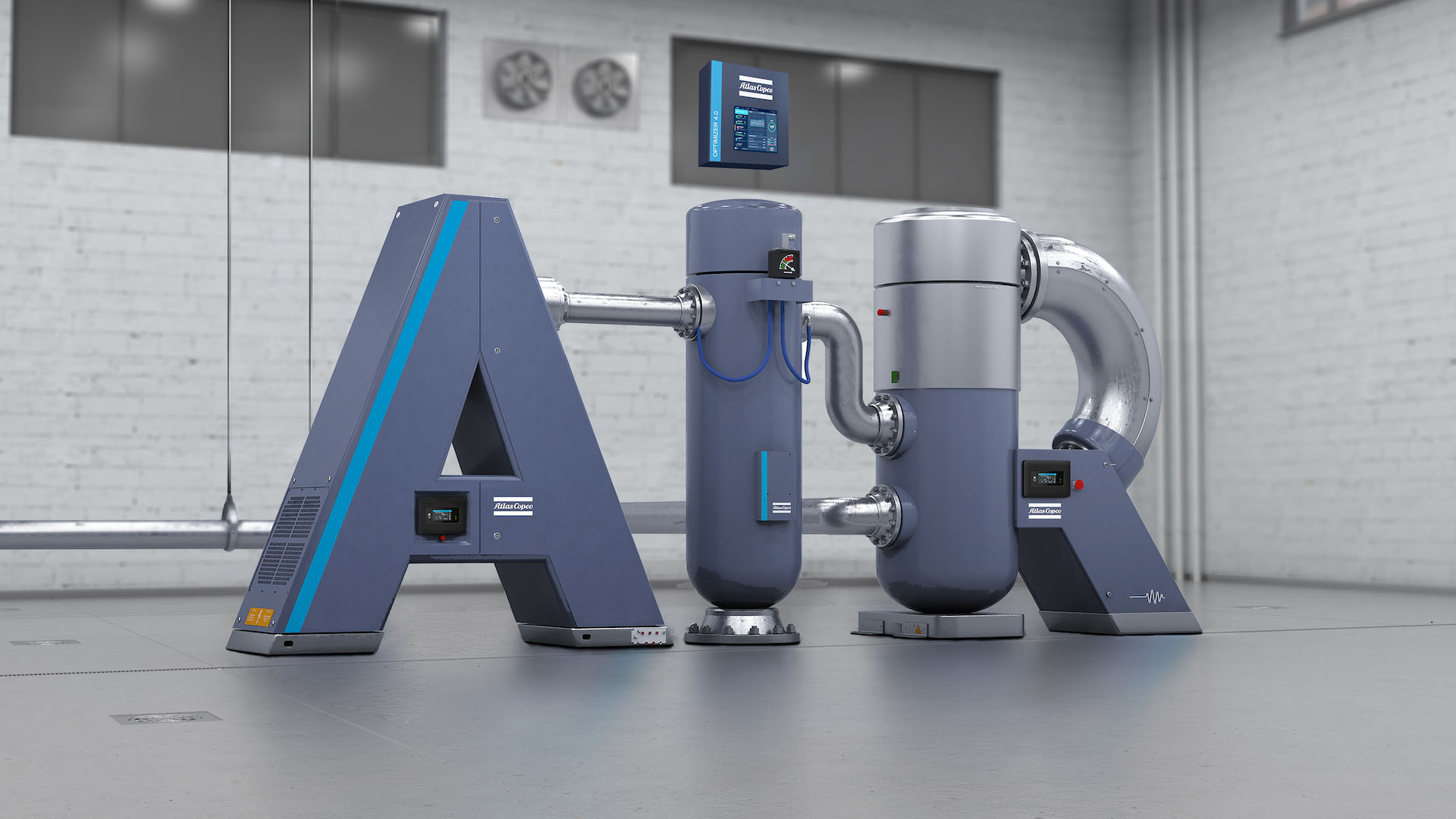
Remote Access and System Optimisation
With a cloud-based dashboard (like those offered by systems such as Atlas Copco SMARTLINK), you can track airflow rates, PSI, and power usage remotely. This gives you 24/7 access to your air system data. Automated notifications alert you to system inefficiencies, preventing downtime and improving overall compressor performance.
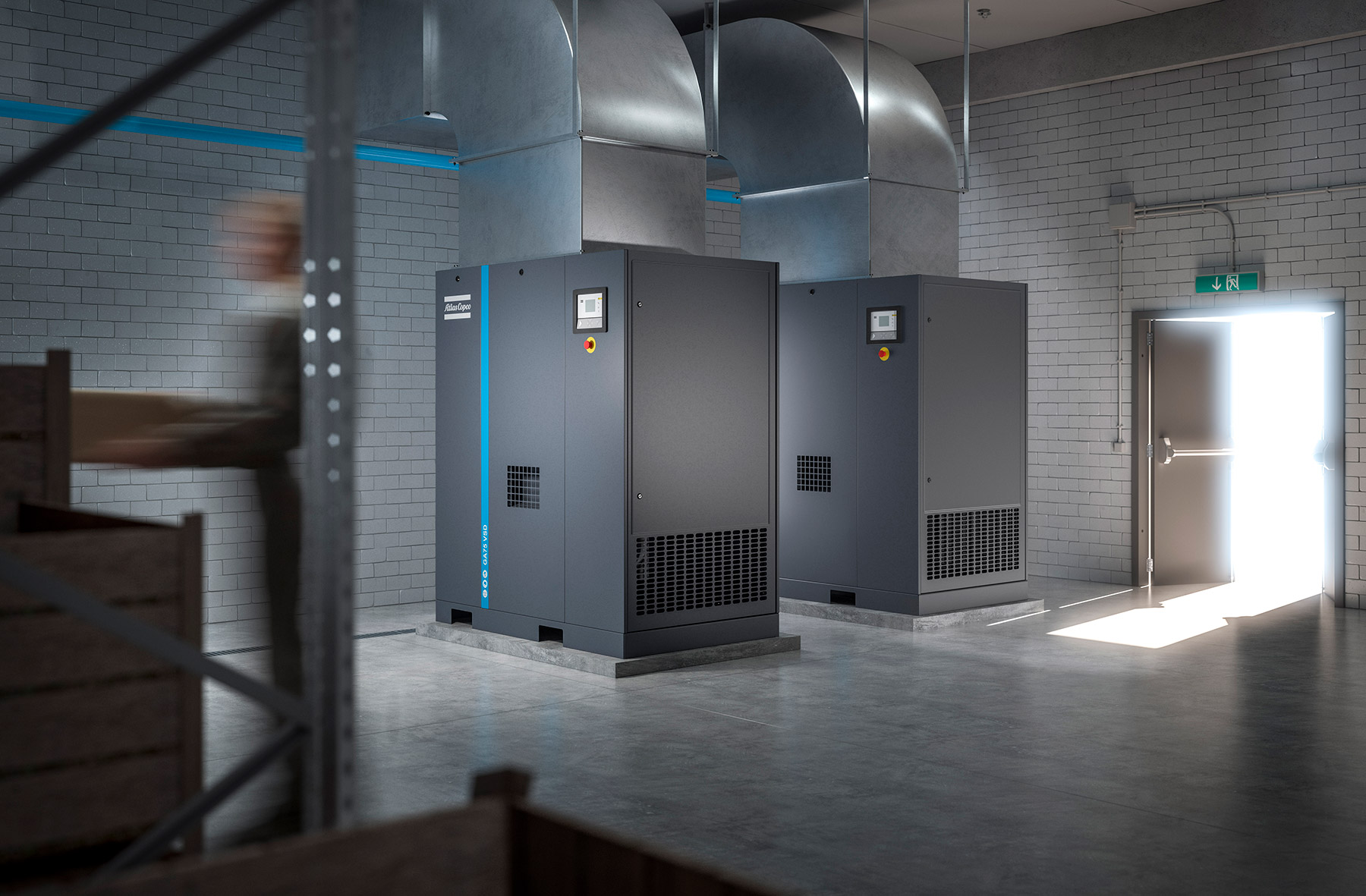
Right-Size Your Compressor and Improve Efficiency
Monitoring reveals whether your air compressor is oversized or undersized, which can affect efficiency. Relying on horsepower (HP) alone is a common mistake. Understanding air compressor measurements like PSI, CFM output (e.g., whether you need 100 cfm or 500 cfm), and kW consumption helps optimise compressor sizing and system performance.

The Bottom Line
Flow monitoring reduces costs, enhances efficiency, and prevents downtime. Investing in real-time monitoring ensures your compressed air system runs at peak performance.
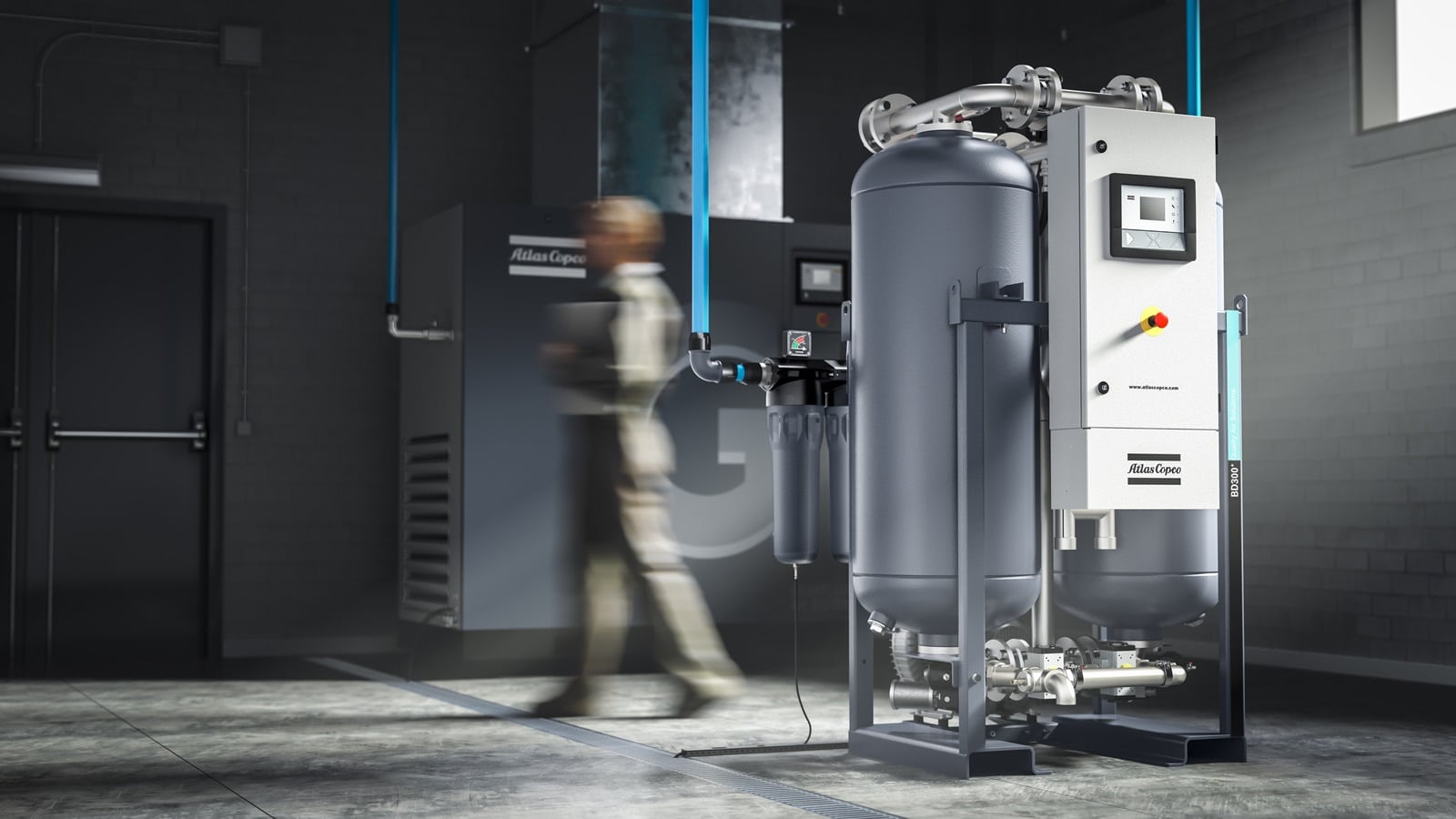
Installing monitoring on your air compressor system
Most modern compressors will come with a range of monitoring features. However, a complete monitoring system will include your complete system, right up to the last tool that it powers, including the piping, filters, and receiver tank.
As compressed air experts, we can advise on what level and type of monitoring solution is right for you, considering the equipment you have, your processes, and what you need to get from your system. Our process often starts with a comprehensive system audit, following standards like ISO 11011, to establish a baseline. Whether it’s simply monitoring flow, or providing a suite of data, we can provide and install the equipment that you need.
Plus, afterwards, we can provide training, advice, and guidance on how to best use your flow monitoring, showing you what to look for, and what actions you can take to get the best out of your system.
Every business needs quality control on its products, and when compressed air is integral to so many production processes, it makes sense to have quality control for your air as well.
Get in touch with us today, and we can show you the difference that flow monitoring can make.
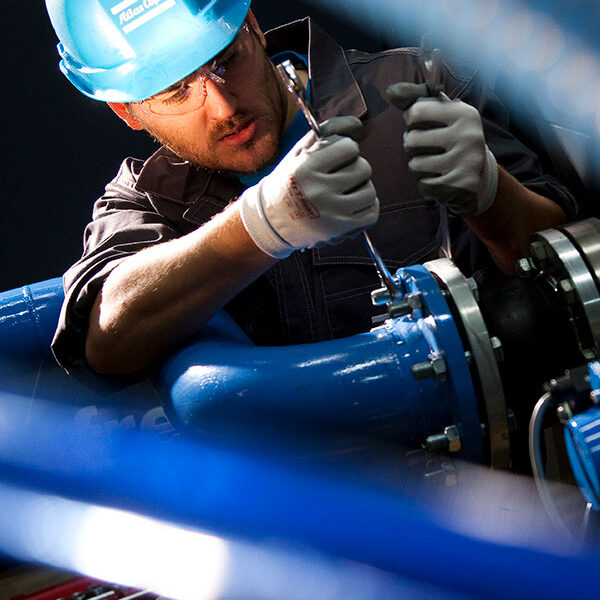
FAQ
How does remote monitoring improve the reliability of my compressed air system?
Remote monitoring lets you track critical data points within the air compressor, such as pressure, volumetric flow, and performance. This continuous data analysis helps ensure your compressed air system operates efficiently and reliably, identifying potential issues before they become costly. It also provides peace of mind by allowing you to monitor your system from anywhere, ensuring the reliability of your air equipment.
Can a monitoring system be added to an existing compressed air system?
Yes. A monitoring system can (and should) be installed on your existing system to provide additional data and improve performance. Whether you use a rotary screw compressor or other air equipment, monitoring can track parameters like mass flow, gas flow, and free air delivery. These systems help ensure your compressed air system is operating optimally without the need for a complete system overhaul.
How do I select the right air compressor for my needs?
Selecting the right air compressor depends on your specific operational requirements. Factors like the volume of air used (air volume), the compressor’s operating environment, and your system’s demand for additional air capacity all play a role. If you don't have enough data, you risk oversizing or undersizing the machine. Consulting with an air compressor manufacturer or an expert auditor can help you choose a compressor that delivers the best air quality and performance for your particular compressor needs.
What is an air compressor monitoring system?
An air compressor monitoring system is a combination of hardware (like flow meters, pressure sensors, and power meters) and software that provides a complete, real-time view of your entire air system's health and efficiency. It goes beyond simple flow monitoring to track energy consumption (kW), pressure (PSI), flow rates (CFM), air quality (dew point), and more. This data is often fed into a dashboard, allowing you to manage your compressed air as the critical "fourth utility" it is.
How do you monitor compressed air consumption?
Compressed air consumption is best monitored by installing flow meters at key points in the system. A main flow meter after the air treatment (dryer and filters) measures the total demand of the plant. Additional meters can be placed on specific high-consumption lines or departments to pinpoint usage. By combining this flow data with a power meter (kW) on the compressor, you can calculate the system's "Specific Power" (kW/100 cfm), which is the ultimate KPI for energy efficiency.
What is the difference between CFM, SCFM, and FAD?
This is a critical distinction.
- CFM (Cubic Feet per Minute): This is a volumetric measurement. The problem is that the volume of air changes with temperature and pressure, so "CFM" alone is an imprecise metric.
- SCFM (Standard Cubic Feet per Minute): This is a mass flow measurement. It measures the flow of air as if it were at a "standard" set of conditions (e.g., a specific temperature, pressure, and humidity). This is a more accurate and stable metric for comparison, and it's what thermal mass flow meters typically measure.
- FAD (Free Air Delivery): This is the actual amount of usable air delivered by the air compressor, measured at the outlet and recalculated back to the standard inlet conditions. This is the most honest metric for comparing the performance of different compressor models.


